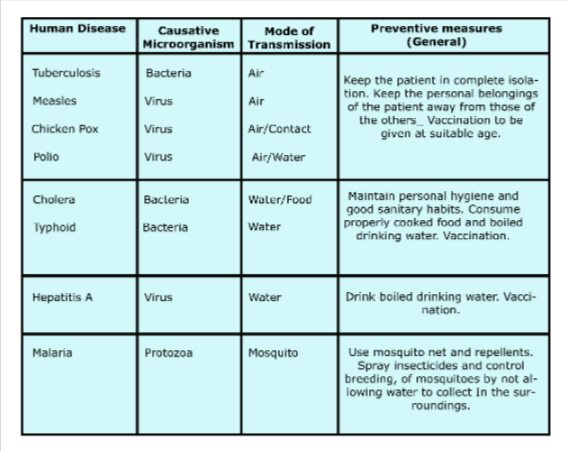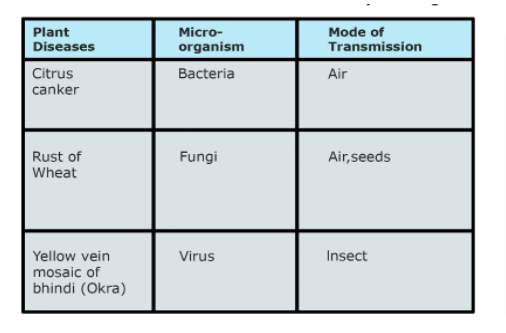Living organisms around us which can not be seen commonly are known as microorganisms or microbes. Microorganisms are categorised into 4 foremost groups: microorganisms, fungi, protozoa, and a few algae. Viruses also are microscopic however are special from different microorganisms and reproduce best within the host organism: bacterium, plant, or animal cell.
Characteristics of Microorganisms
- Microorganisms can be unicellular (micro organisms, a few algae, and protozoa), or multicellular (many algae and fungi)
- Microorganisms stay in all styles of environments, starting from ice bloodless weather to warm springs, and deserts to marshy lands
- Microorganisms are located in air, water and within the bodies of flowers and animals
- Some microorganisms develop on different organisms at the same time as others exist freely
Microorganisms and Us
Microorganisms play an essential function in our lives. Some of them are useful in lots of approaches while a few others are dangerous and motive illnesses.
Harmful Microorganisms
Microorganisms are dangerous in lots of approaches. Some of the microorganisms motivate illnesses in human beings, flowers, and animals. Such sickness-inflicting microorganisms are known as pathogens. Some microorganisms break meals, clothing, and leather.
Disease infecting Microorganisms in Humans: Microbial illnesses which can unfold from an inflamed man or woman to a wholesome man or woman thru air, water, meals, or bodily touch are known as communicable illnesses. Some bugs and animals act as vendors of sickness-inflicting microbes (pathogens). For example,
- Female Anopheles mosquito consists of the parasite of Malaria (Plasmodium)
- Female Aedes mosquito acts as a service of Dengue virus
Some of the not unusual place illnesses affecting humans, their mode of transmission and few popular techniques of prevention are given inside the following Table:

Disease infecting Microorganisms in Animals: Several microorganisms motivate illnesses in animals. For example, Anthrax is a risky human and livestock sickness resulting from a bacterium. Foot and Mouth sickness of livestock is resulting from a virus.
Disease infecting Microorganisms in Plants: Several microorganisms motivate illnesses in flowers like wheat, rice, potato, sugarcane, orange, apple, and others. The illnesses lessen the yield of crops. They may manage the usage of sure chemical compounds which kill the microbes. Some such plant illnesses are proven below:

Food Poisoning
Microorganisms every so often produce poisonous materials and make the meals toxic inflicting critical infection or even death. Various techniques used to defend meals from being spoilt are termed as Food Preservation techniques. Most not unusual place techniques are:
- Chemical Method: Salts and safe to eat oils are the not unusual place chemical compounds commonly used to test the increase of microorganisms. Therefore, they may be known as preservatives. For example, Salt or acid is brought to pickles and Sodium benzoate and sodium metabisulphite are utilised in jams and squashes
- Preservation with the aid of using Common Salt: Common salt has been used to keep meat and fish for ages. Salting is likewise used to keep amla, uncooked mangoes, tamarind, etc
- Preservation with the aid of using Sugar: Jams, jellies and squashes are preserved with the aid of using Sugar. Sugar reduces the moisture content material which inhibits the increase of micro organisms which break meals
- Preservation with the aid of using Oil and Vinegar: Use of oil and vinegar prevents spoilage of pickles. Vegetables, culmination, fish, and meat are regularly preserved with the aid of using this method
- Heat and Cold Treatments: Boiling kills many microorganisms at the same time as Low temperature inhibits the increase of microbes. The milk is heated to approximately seven-hundred C for 15 to 30 seconds after which it is unexpectedly chilled and stored. This technique was observed with the aid of using Louis Pasteur. It is known as pasteurisation
- Storage and Packing: Dry culmination or even veggies are sealed in hermetic packets to save you the assault of microbes
Conclusion
Microorganisms are specific to their host. Some infections, such as Anthrax, exclusively harm animals, yet they may be transferred to humans as well. Certain bacteria and viruses attack plants to cause illnesses such as Crown gall disease. Diseases that harm animals and plants may reduce product quality and production, resulting in investment losses. As a result, microbial growth must be controlled.
Microorganisms are harmful not just to the human body, but also to the food we consume. They may proliferate on food and emit poisonous by-products, resulting in food poisoning. To prevent food poisoning, food is preserved in a variety of techniques such as pasteurisation, salting, boiling, and so on.
To sum up, germs are everywhere around us. Our surroundings are home to billions of minute species, from the chair we sit in to the keyboards we use. Furthermore, bacteria dwelling in our gut play a significant function in our digestive health. In other words, although the majority of bacteria are not hazardous, we must take measures against those that are hazardous.
 Profile
Profile Settings
Settings Refer your friends
Refer your friends Sign out
Sign out













